open main page for all woods open page 2 for articles
INDENTED GRAIN AND BEAR CLAW FIGURE
Indented grain refers to exactly what it sounds like ... a section of grain that is indented from the grain line of which it is a part. There is some confusion (well, for me anyway) about the relationship between "bear claw" figure and indented grain because there really are two notably different forms of indented grain. The first is what I personally refer to as "normal" indented grain, as discussed in Bruce Hoadley's "Identifying Wood" on page 65 where he specifically states that it is the cause of "bear claw" figure. This type of indented grain occurs in softwoods such as ponderosa pine and sitka spruce. Then there is the kind of indented grain that I call, for obvious reasons, "spiky" indented grain. It has spikes running through the grain lines, which are moved off of the straight and narrow by the spikes, but in a more sharply triangular way than the "normal" indentations (which are rectangular or like the top of a sine wave, but not sharply triangular). This "spiky" kind of indented grain occurs in hardwoods such as maple. It is also shown here in anigre and cherry.
Bear claw figure is a series of fairly straight lines that occur on flat cut surfaces because of one or the other of the two kinds of indented grain. In maple, the bear claw is caused by the spiky kind of indentations and in Ponderosa pine and spruce it is cause by the normal kind of indentations. In spruce, the figure on flat cut surfaces is significantly different than that on maple and pine in that the lines do not follow the direction up and down the tree but rather wander all over the place. In maple and pine, the bear claw lines are almost exactly aligned with the direction up and down the tree. In the only 2 samples I've ever seen of bear claw in anigre, shown on this page, the lines are aligned up and down the tree.
Examples:
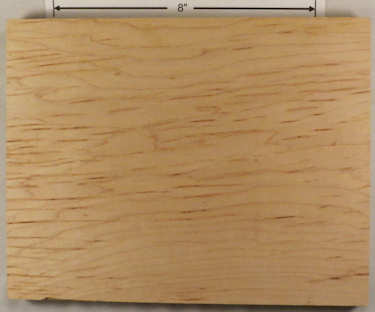
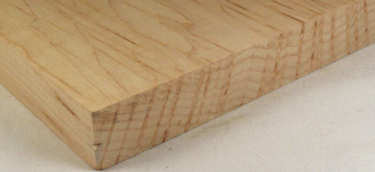
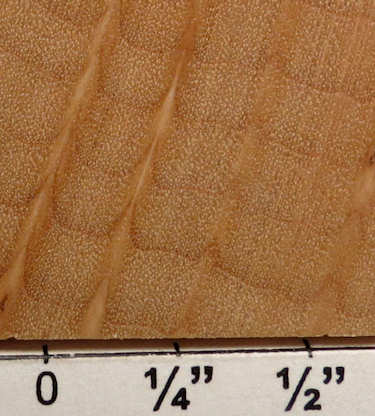
very typical bear claw maple, showing the spiky kind of indentations. Note how these are triangular indentations that follow the spikes and in fact look as though they have been pushed into position by the spikes. Also note that the spikes are, as nearly as I can tell, simple rays that for some reason have gone nuts. In the enlargement of the end grain closeup you can see lots of normal rays on either side of the ones that cause the spikes. Note that the bear claw lines on the face grain are very long (some run the entire length of the sample) and somewhat follow the direction of up and down the tree (they run pretty much length-wise in the face grain shot but they do meander a bit).
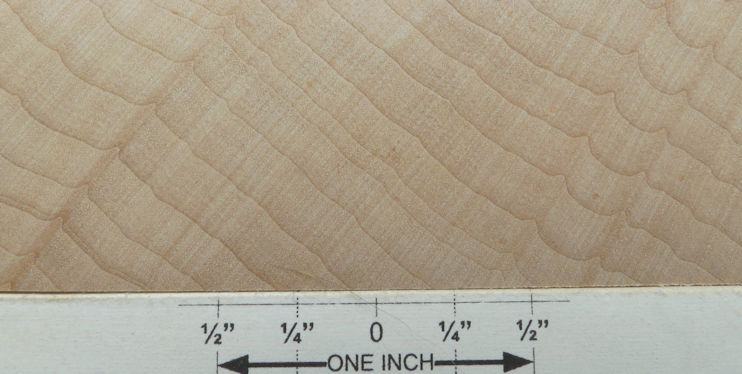
bear claw maple with relatively mild (for maple) indented grain

a 2"x1" section of red maple with bear claw figure and a 1/2" x 1/2" end grain section showing the indented grain.

a 2"x1" section of red maple with bear claw figure and a 1/2" x 1/2" end grain section showing the indented grain.
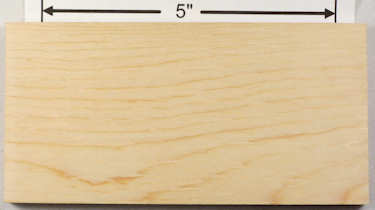
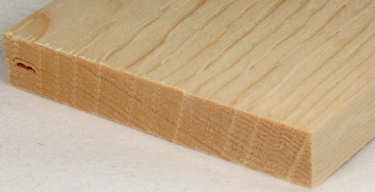
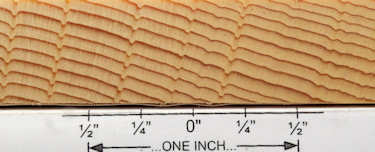
absolutely classic "normal" (rectangular) indented grain causing bear claw figure in Ponderosa pine. Note that the bear claw lines on the face grain shot are only moderate in length but follow the direction of up and down the tree very closely (they run length-wise in the face grain shot).
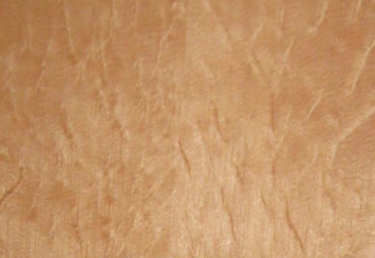
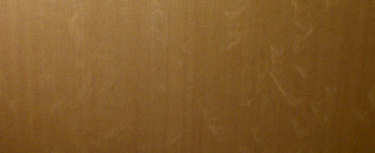
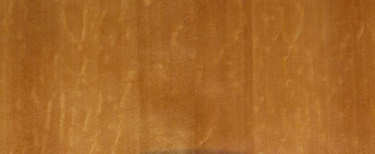
various face grain shots of bear claw spruce. This is caused by the normal indentations but I have no end grain shots to show that. Note that the bear claw lines here, unlike those in pine and maple, do NOT follow a direction of up and down the tree, but wander all over the place.
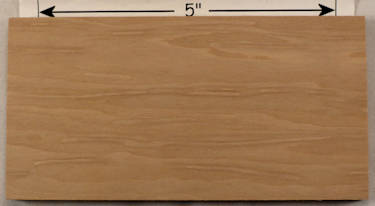
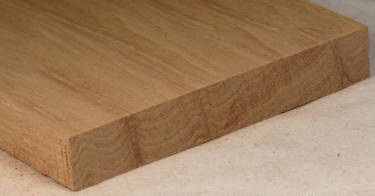
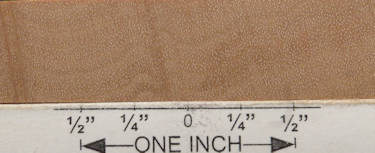
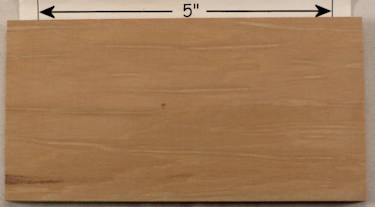
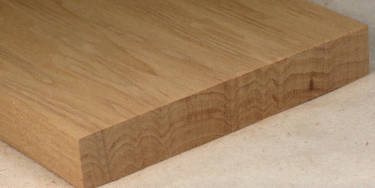
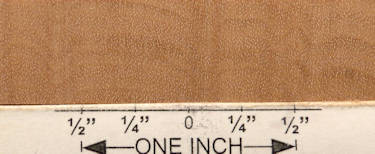
two samples of bearclaw anigre with face grain, end grain, and end grain closeup. The "scratch" marks are parallel to the grain in these and the grain indentation is the spiky kind.
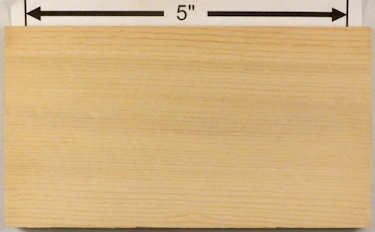
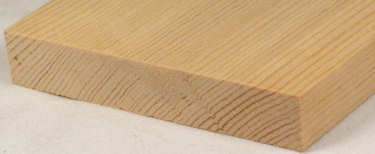
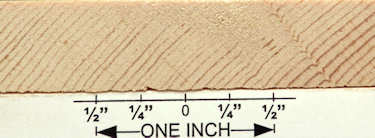
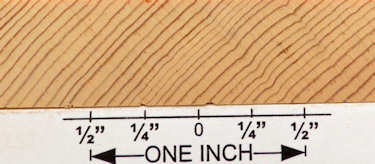
Very lightly indented grain in Eastern white pine. These indentations are so brief in the direction of up and down the tree that they do not cause a full bear claw figure but rather cause dimples in the wood. These dimples are very hard to see in the face grain shot but they are there. In the end grain closeup you can see the indentations very clearly and after I fine-sanded it for the end grain update, you can see that the indentations have become much more weak. A little more sanding and that set of indentations would be gone.
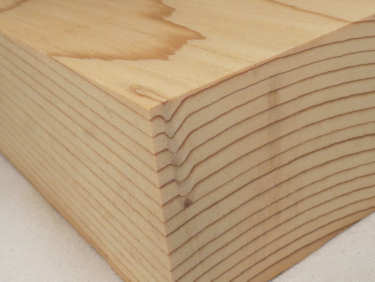
corner shot of a piece of pine/larch/fir that has indented grain
 3s.jpg)
redwood (giant sequoia) with indented grain
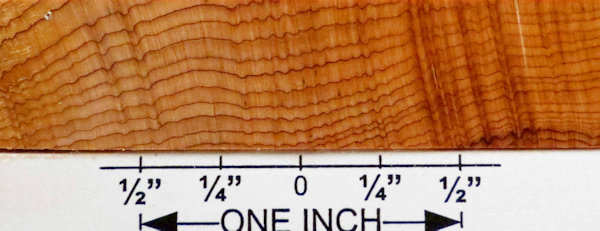
Pacific yew with indented grain
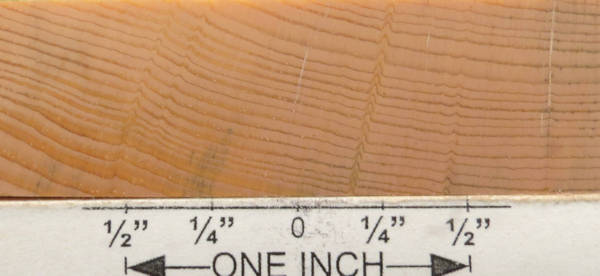
black pine with indented grain
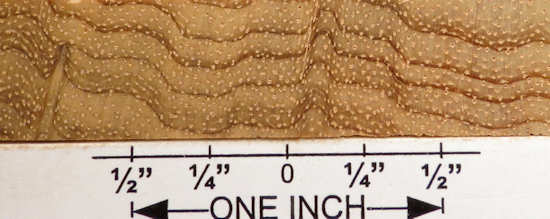
limba with indented grain
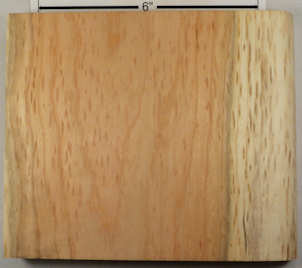
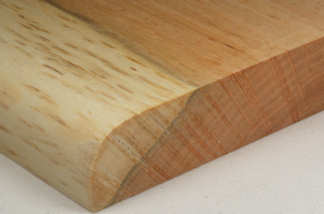
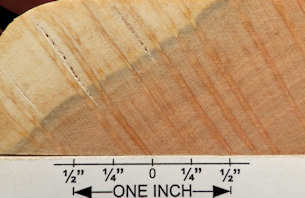
bear claw American black cherry showing the spiky kind of indentations. Bear claw cherry seems to be much more rare than bear claw maple.
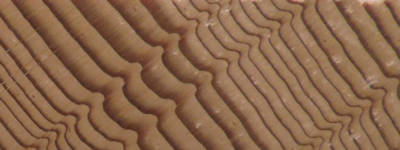
sitka spruce with indented grain
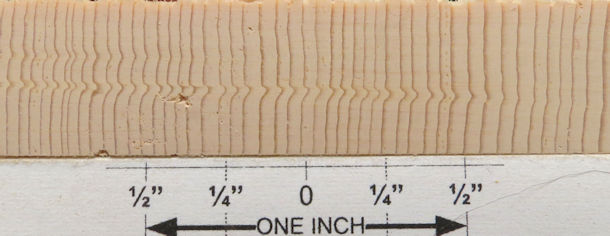
sitka spruce with indented grain
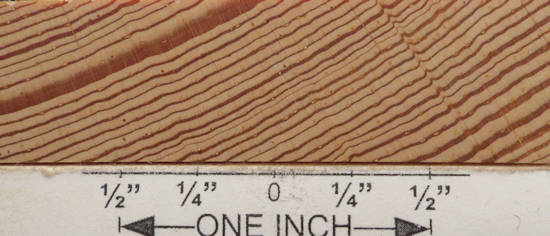
yellow pine with indented grain
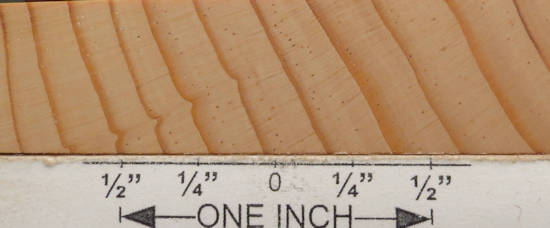
red pine with indented grain
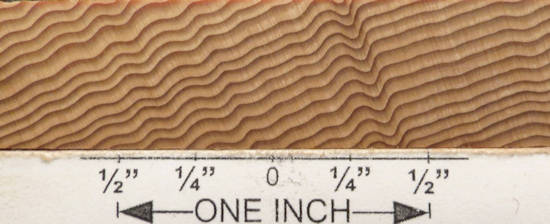
hemlock with indented grain
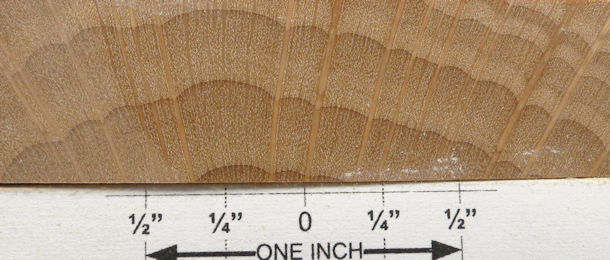
hazelnut with indented grain























 3s.jpg)











